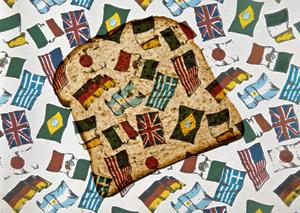

If you thought that things such as population growth, war, natural disasters, and drought were root causes of world hunger, think again. Researchers at the U of I have created a new way of looking at the problem that suggests some old assumptions may be misguided.
Geography professor Thomas Bassett and agricultural and consumer economics professor Alex Winter-Nelson were troubled by how other measures of hunger, including the “food availability” measure used by the United Nations, underestimate the hunger problem. For example, nations such as Brazil and China have enough food to feed their residents, yet studies show that millions there are going hungry.
The researchers created a Hunger Vulnerability Index to better locate the hungry and determine why they weren’t getting enough food. They examined maps of various indicators of hunger, such as children’s growth rates, to see which factors are associated with hunger vulnerability—and which are not.
“Maps are tools to interrogate the problem,” Bassett says. “For example, we look at population growth rates around the world and we show that there actually is no strong relationship between population growth and hunger.”
Bassett and Winter-Nelson also take issue with the idea that wars and natural disasters are a primary cause of hunger.
“For us, natural or human-made disasters are exacerbating events that push people into hunger because they are already vulnerable,” Bassett says. Drought, for example, does not lead to famine if people “have the resources to cope with disaster,” he adds.
Of all the factors that influence hunger, poverty with a lack of resources is the most common link, Bassett and Winter-Nelson report. The index also locates those vulnerable to hunger by using a wider definition of poverty than most other assessments.
“The common idea is if you’re living on less than can be purchased in the U.S. for $1.25 in a day, you’re extremely poor,” Winter-Nelson says. “People under that threshold are almost certainly suffering from hunger and will often be victims of early death because of their poverty. In our analysis, we took a higher threshold of $2 a day to try to capture people who are at risk of falling into that kind of extreme poverty.”
Bassett and Winter-Nelson also found that regions with high literacy, access to healthcare services and technology, and more gender equality tend to have lower rates of hunger and vulnerability to hunger.
“If women’s status is low—that is, if their incomes are low—they have little power in the household in decision-making around how money is spent,” Bassett says. “That’s a sign that children are probably going to suffer because women are suffering.”
A narrated slideshow is available online.


